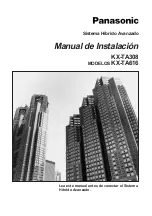
Art. No. DS 4092 TS
4.2.4.4 Extension inputs (E1, E2, E3)
The following section contains descriptions of the various functions that can be configured in the
ETS independently for each input. The functions "Switching", "Dimming", "Venetian blind" or
"Value transmitter" can be set.
4.2.4.4.1 Extension function Switching
For each input whose function is set to "Switching", the ETS displays two 1-bit communication
objects (switching object X.1 and X.2). It is possible to use these two objects to transmit
different switching telegrams to the bus depending on the signal edge at the input. The input
parameter on the parameter page "Ix - General " (x = 1, 2, 3) can be used to define which object
value is transmitted to the bus when there is a rising or falling edge at the input (no reaction,
ON, OFF, TOGGLE - switchover of the object value). No distinction is made between a brief or
long signal edge/actuation in the "Switching" function.
Response to bus voltage return
After a device reset (bus voltage return or ETS programming operation), the communication
objects of the input can be initialised. For this, the "Behaviour on bus voltage return" parameter
should be configured to the required reaction. In the settings "send ON telegram" or "send OFF
telegram" telegrams are transmitted actively to the bus according to this requirement. In the
"Transmit current input status" setting, the device evaluates the static signal status of the input
and, according to this, transmits the appropriately configured telegram to the bus (contact
closed at the input = telegram as with rising edge; contact open at input = telegram as with
falling edge). If, in this case, the edge command dependent on the current status is configured
to "No reaction", the device does not transmit a telegram to the bus on initialisation.
If, in the ETS, a delay is set for the extension inputs after bus voltage return, the device only
transmits the telegrams when the delay has elapsed.
Cyclical transmission
Optionally, the object values can be transmitted cyclically to the bus for the "Switching" function.
For this, the transmission criteria must first be defined in the ETS. The "Transmit cyclically ?"
parameter on the parameter page "Ix - Transmit cyclically" (x = 1, 2, 3) specifies with which
value cyclical transmission should take place. Depending on requirements, it is possible to
transmit cyclically via both or just one switching object(s). In addition, it is possible to define the
cycle time separately for both switching objects in the ETS.
The object value entered in the switching objects by the device on a edge change or externally
by the bus is always transmitted cyclically. The object value is then also transmitted cyclically
when "no reaction" is assigned to a rising or falling edge. Cyclical transmission also takes place
directly after bus voltage return, if the reaction after bus voltage return corresponds to the
transmission criterion for cyclical transmission. During an active disable, no cyclical
transmissions take place via the disabled input.
i
The energy saving mode is never activated while extension inputs are transmitting
cyclically!
Page 78 of 143
Software "Rotary sensor with extensions 10FE1x"
Functional description
















































